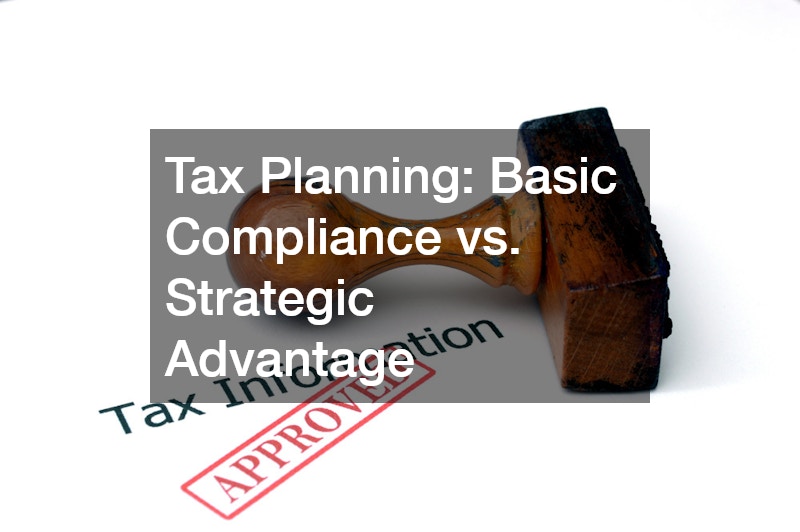Financial management is the heartbeat of any successful business, regardless of size. Whether you’re running a lean startup or managing a multinational enterprise, how you handle money can make or break your company. But while the goals—profitability, sustainability, and growth—are consistent, the scope of financial management in small vs. large businesses differs significantly in complexity, tools, and strategic outlook.
In this comprehensive guide, we’ll explore the contrasting financial management landscapes between small and large businesses. We’ll break down what each needs, the challenges they face, and how financial strategies scale with business size.
What Is Financial Management and Why Is It Crucial for Any Business?
Financial management is the strategic planning, organizing, controlling, and monitoring of financial resources to achieve business objectives. It includes budgeting, forecasting, investing, risk management, and securing funding. In essence, it ensures that the company’s finances are used efficiently to generate growth and stability.
For small businesses, it’s about staying afloat and scaling sustainably. For large enterprises, it involves complex asset portfolios, multinational tax compliance, and investor relations. Both require discipline, but the approach and scope vary greatly. Understanding these differences allows business owners to tailor financial strategies to their company’s specific needs and stage of growth.
Financial Goals: Shared Intent, Different Execution
While the financial goals of small and large businesses may seem similar on paper, the scale and execution differ considerably.
Common Financial Goals:
- Profit maximization
- Cost control
- Long-term sustainability
- Efficient cash flow management
- Strategic investment in growth opportunities
How Small Businesses Handle Financial Goals:
Small businesses tend to focus on immediate financial survival:
- Maintaining positive cash flow
- Reducing operational costs
- Building emergency funds
- Minimizing debt
Most of their financial decisions are made by the owner or a single finance person, with less reliance on analytics and more on instinct or real-time needs.
How Large Businesses Handle Financial Goals:
Large businesses have departments of financial experts and advanced systems:
- Long-term financial modeling
- Investment in R&D and innovation
- Diversified revenue streams
- Capital structuring and stockholder value management
These companies have the luxury to think in decades, not just quarters.
Budgeting and Forecasting: Simple vs. Sophisticated Systems

Small Business Budgeting:
In small businesses, budgeting is often:
- Spreadsheet-based
- Monthly or quarterly
- Reactive rather than proactive
Owners usually juggle budgeting with other responsibilities. Forecasts are short-term, focused on survival, and updated manually when needed.
Large Business Budgeting:
Large businesses use:
- Enterprise Resource Planning (ERP) software
- Data-driven predictive analytics
- Annual budgeting cycles with mid-year revisions
- Departmental and divisional coordination
These forecasts are more forward-looking, based on historical data and external market insights.
Key Differences:
| Aspect | Small Business | Large Business |
| Tools | Excel, basic accounting tools | SAP, Oracle, NetSuite |
| Focus | Cash flow and survival | ROI, shareholder value |
| Time Frame | Monthly/Quarterly | Annual/Strategic (3–5 years) |
Investment Decisions: Conservative vs. Diversified
Investments are crucial to drive growth, but the risk appetite and capacity to invest vary significantly.
Small Businesses:
- Conservative risk tolerance
- Investments focused on equipment, marketing, or personnel
- Decisions often made without financial advisors
- Reliance on personal or business loans
Large Businesses:
- Broader investment portfolios (real estate, tech, stocks, M&A)
- Dedicated teams or departments for investment planning
- Institutional funding options and market expansion strategies
- Focus on long-term asset appreciation and shareholder returns
In short: Small businesses bet on growth. Large businesses hedge risk while fueling scale.
Financing: Limited Access vs. Diverse Options
The way companies fund their operations is another major differentiator.
How Small Businesses Secure Financing:
- Personal savings
- Family and friends
- Bank loans and microloans
- Crowdfunding or angel investors
Due to limited credit history and revenue, small businesses often face higher interest rates and loan rejections.
How Large Businesses Raise Capital:
- Public stock offerings (IPOs)
- Corporate bonds
- Venture capital or private equity
- Large-scale loans with favorable terms
Larger enterprises have better access to capital markets, making them more agile in responding to financial opportunities or threats.
Risk Management: Survival vs. Sustainability
Risk management practices are essential to financial stability, but the approaches differ depending on the size and resources of the business.
Small Business Risk Management:
- Insurance (basic coverage: fire, theft, liability)
- Minimal diversification
- Owner-led crisis responses
- Vulnerable to economic downturns
Large Business Risk Management:
- Comprehensive risk frameworks
- Use of derivatives and hedging
- Internal compliance teams
- Legal departments and audit committees
Key takeaway: Small businesses focus on staying open tomorrow. Large businesses prepare for global volatility.
Scope of Financial Management in Small vs. Large Businesses
Understanding the scope of financial management in small vs. large businesses highlights both the strategic depth and practical demands required for each type.
In Small Businesses, the Scope Typically Covers:
- Daily bookkeeping
- Expense tracking
- Simple payroll systems
- Invoicing and collections
- Short-term budgeting
The focus is practical, grounded in cash management and making every dollar work.
In Large Businesses, the Scope Broadens to Include:
- Financial planning and analysis (FP&A)
- Mergers & acquisitions
- Multinational tax optimization
- Treasury operations and capital markets
- Corporate governance and investor relations
Large businesses approach financial management as both an art and a science, blending compliance with strategic influence.
Cash Flow Management: Lifeblood vs. Strategy Tool
Cash flow is critical in all businesses, but it has a life-or-death importance for small companies.
Small Businesses:
- Operate on thin margins
- May experience frequent cash crunches
- Need quick receivables turnaround
- Often rely on credit lines to bridge gaps
Large Businesses:
- Maintain substantial reserves
- Use cash flow projections for investment decisions
- Implement detailed cash flow analysis tools
- Engage in cash pooling and intercompany funding strategies
The level of sophistication and buffer capacity is what sets large companies apart.
Tax Planning: Basic Compliance vs. Strategic Advantage

Small Businesses:
- File annual returns using accountants or small tax firms
- Focus on compliance and deductions
- Limited use of tax-saving structures
- Rarely engage in proactive tax planning
Large Businesses:
- Hire tax attorneys and consultants
- Structure international entities to minimize taxes legally
- Leverage tax credits, subsidies, and incentives
- Engage in transfer pricing and long-term tax strategies
Tax planning is reactive in small businesses and strategic in large ones.
Financial Reporting and Auditing
Financial transparency is required across the board, but the extent of reporting differs drastically.
Small Businesses:
- Prepare basic financial statements (income statement, balance sheet, cash flow)
- Use accounting software like QuickBooks or Xero
- May not require audits unless seeking investment or loans
Large Businesses:
- Follow International Financial Reporting Standards (IFRS) or GAAP
- Prepare detailed quarterly and annual reports for stakeholders
- Are subject to regular internal and external audits
- Use financial reporting as a communication tool for investors
Financial reporting in large firms is a regulatory and strategic necessity.
Technology in Financial Management
Small Businesses:
- Use simple accounting platforms and spreadsheets
- May automate invoicing or payroll
- Limited analytics or business intelligence
Large Businesses:
- Invest in cloud-based ERP systems
- Use AI for fraud detection and predictive modeling
- Leverage real-time dashboards and KPI tracking
- Integrate finance with operations, HR, and supply chain
Tech adoption mirrors company size and available capital.
Financial Leadership: Owner-Driven vs. Department-Driven Structures
In small businesses, financial leadership often falls directly on the owner or a single bookkeeper who wears multiple hats. This hands-on approach allows for quick decisions but can lack depth in strategic planning. On the other hand, large businesses employ CFOs, controllers, and finance departments with specialized roles. This allows for comprehensive planning, compliance, and risk management. The structure of financial leadership deeply influences decision-making speed, accountability, and scalability.
Key Differences:
- Small Businesses:
- Financial decisions made by the owner or a general manager
- Limited delegation due to budget constraints
- Less formal financial oversight or policy enforcement
- Large Businesses:
- Dedicated CFOs and finance teams
- Segregation of duties (accounting, planning, auditing)
- Strategic financial oversight for long-term planning
Compliance and Regulatory Obligations: Simple vs. Extensive Requirements
Compliance is a major component of financial management, but the depth and breadth of obligations differ significantly. Small businesses usually deal with basic tax filings, local licenses, and payroll compliance. Large enterprises must adhere to complex regulatory frameworks, especially if they operate in multiple countries or are publicly listed. Missteps in compliance can lead to hefty penalties, reputational damage, or operational delays.
Key Differences:
- Small Businesses:
- Focused on local tax laws and business permits
- Limited exposure to international laws
- Fewer audits and less reporting to external bodies
- Large Businesses:
- Must comply with national and international regulations (e.g., SOX, SEC, IFRS)
- Regular internal and external audits
- Heavily regulated industries (e.g., finance, healthcare) face additional scrutiny
Scalability of Financial Systems: Manual vs. Integrated Solutions
The scalability of financial systems is crucial as a business grows. Small businesses often rely on entry-level tools that serve basic needs but may struggle as operations expand. Large businesses, by contrast, invest in fully integrated financial systems that support multi-department coordination, real-time reporting, and strategic forecasting. Choosing the right financial systems at the right stage can either hinder or accelerate business growth.
Key Differences:
- Small Businesses:
- Use low-cost or free accounting software (e.g., Wave, QuickBooks)
- Limited automation or customization
- Systems may not scale well with growth
- Large Businesses:
- Use ERP systems (e.g., SAP, Oracle, Microsoft Dynamics)
- Support for multiple users, currencies, and locations
- Integration with HR, sales, inventory, and procurement
Key Takeaways: How to Align Financial Management with Business Size
Here are practical steps business owners can take to align their financial strategies with their growth stage:
For Small Business Owners:
- Prioritize cash flow and budgeting discipline
- Use affordable accounting tools that scale
- Seek financial literacy and advisory support
- Regularly review financial health with a simple dashboard
For Large Business Leaders:
- Invest in scalable financial systems
- Align finance with long-term strategy and governance
- Diversify investments and manage risks proactively
- Maintain regulatory compliance across all jurisdictions
Final Thoughts: Matching Scope with Strategy
No matter the size, every business needs solid financial management to succeed. The key difference lies in scope, complexity, and execution. Small businesses must master the fundamentals with limited resources, while large businesses need structured systems and strategic foresight.
By understanding these differences, business owners can better prepare for growth and resilience. Whether you’re launching a small business or steering a corporate enterprise, aligning your financial practices with your company’s scale is essential for long-term success.





